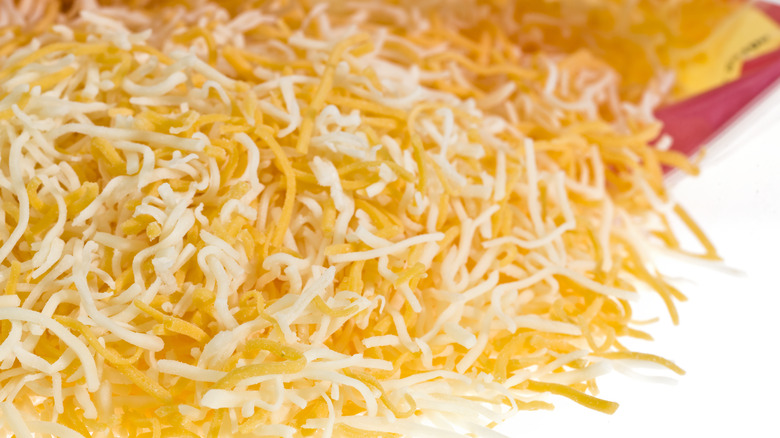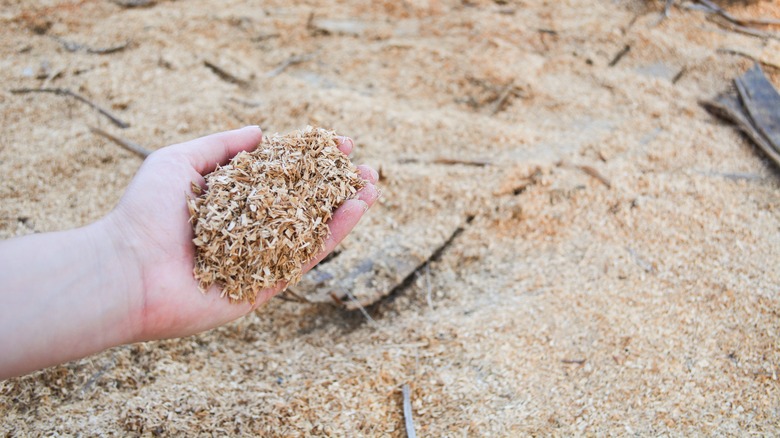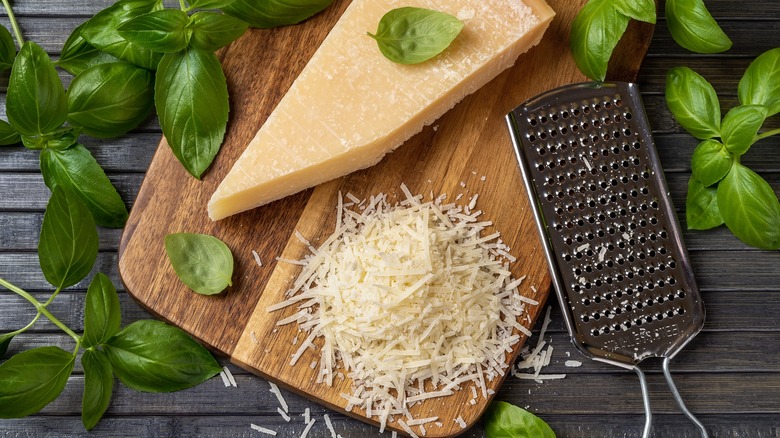The Reason Wood Pulp Is Often Added To Shredded Cheese
In 2016, an FDA food fraud investigation into Castle Cheese Inc. revealed the brand was using wood pulp in its shredded cheese products. At the time, several class action lawsuits were filed accusing companies like Walmart and Kraft of defrauding customers with false claims of "100% Grated Parmesan Cheese" due to the presence of wood pulp. Although headlines were quick to highlight the addition of the pulpy substance in these products, the scandal was more about allegations of misleading advertising.
Wood pulp, also known as cellulose, is a common food additive. Companies use the cost-saving carbohydrate because of its effect on shredded cheese's consistency. In fact, the cheese-labeling lawsuits were voluntarily dismissed with prejudice in 2022 (via Truth in Advertising). However, as The Counter reported, Walmart amended its grated cheese labels.
Learning that shredded cheeses contain wood pulp may make you think twice about whipping up your favorite macaroni and cheese. However, the addition of cellulose in food isn't something new — the FDA has officially been fine with it since 1973 — and it definitely shouldn't put you off eating the convenient dairy product.
Cellulose and its use in shredded cheese
Cellulose is a type of dietary fiber that is found naturally in the cell walls of fruits, vegetables, cereal grains, and other plants. One of the most common types of cellulose used in processed foods like shredded cheese comes from wood pulp in the form of microcrystalline cellulose, which is made using dry milling and acid hydrolysis, per Powder Technology. Its primary function is to prevent caking by forming a barrier and soaking up any water inside the packaging that might cause the cheese to clump. This is one reason why some pre-shredded cheeses don't melt, as the addition of cellulose works to keep the shreds separate.
The major issue with cellulose in shredded cheeses is manufacturers that use it as a cheap filler ingredient, like Castle Cheese Inc., which was found guilty of adulterating its Parmesan after an FDA food fraud investigation. Wood pulp is also found in enriched breads and in ice cream since it makes frozen treats creamier without the use of dairy. Although cellulose is safe for consumption and technically a source of fiber, it lacks the nutrients that other sources, like whole grains, can provide.
How you can avoid wood pulp in shredded cheeses
Even though wood pulp isn't harmful when used as an anti-caking agent in shredded cheeses, there are times when you may want to steer clear of it. For instance, if you're making a dish like parmesan-crusted steak, where melted cheese is essential.
If you want perfectly melted cheese without any sneaky additives, grab a block of cheese and shred it yourself at home. Cheese blocks generally lack the addition of wood pulp, typically only containing pasteurized milk, enzymes, cheese culture, and additional flavorings, depending on the variety. It may not be as convenient, but it will ensure consistent melting. You should also be on the lookout for other anti-caking agents, such as potato starch and corn starch, which are also used in shredded cheeses. While perhaps more appetizing than wood pulp, they will also prevent your cheese from melting correctly.
Of course, avoiding wood pulp entirely is easier said than done, as the substance can now be found in everything from cakes to smoothies, especially if you frequent fast food restaurants like McDonald's. Overall, while some manufacturers use it for fraudulent means, wood pulp is ultimately completely safe to eat, even if the thought of it might not make you hungry.


